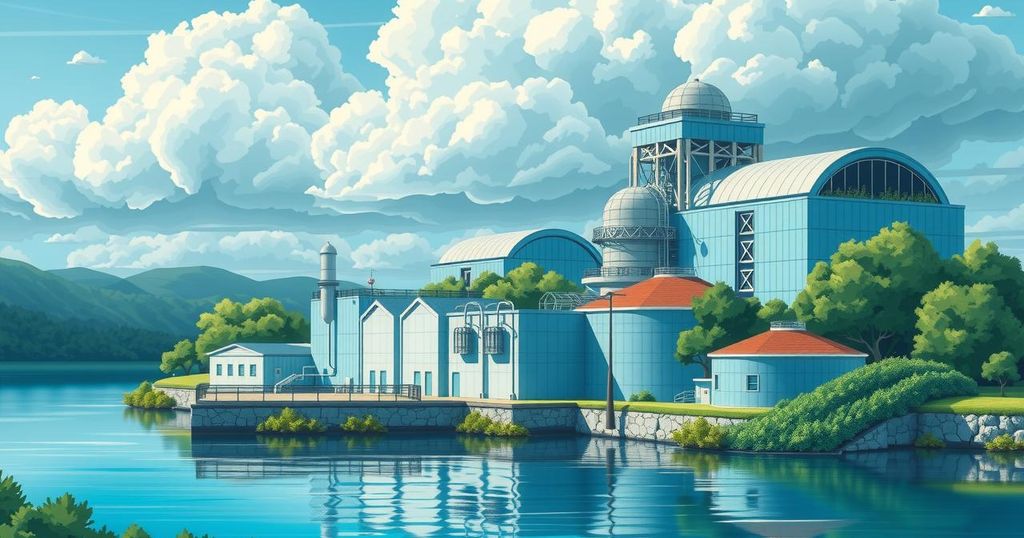Anacortes, Washington Rebuilds Water Treatment Plant for Climate Resilience
Anacortes, Washington, is rebuilding its water treatment plant to address vulnerabilities caused by climate change. Serving 56,000 residents, the facility will expand its capacity to 31.5 mgd amid rising flood risks and saltwater intrusion. Utilizing various EPA tools, the city plans to implement strategies to mitigate these challenges during the plant’s reconstruction, estimated at $56 million.
The city of Anacortes, Washington, identified vulnerabilities in its water treatment plant, which serves 56,000 residents and is located along the Skagit River. In 2003, it became clear that the facility needed an upgrade from its capacity of 21.4 million gallons per day (mgd) to 31.5 mgd. Although relocating the facility from the floodplain was prohibitively expensive in 2008, city officials opted to rebuild on the original site while incorporating climate adaptation strategies.
To assess the plant’s vulnerabilities, officials collaborated with non-profit organizations to review the best available climate science and its impacts on the plant’s location. They considered various climate risks, including increased storm intensity, saltwater intrusion, and sedimentation levels. Projections for the Skagit River indicated significant vulnerabilities, such as an enlarged floodplain and a predicted 350% rise in suspended sediment during winter months due to climate change effects through the year 2080.
In the design and construction phases, officials aimed to mitigate flood risks by implementing several protective measures. These included minimizing penetration below established flood elevations, elevating critical electrical equipment, using waterproofing techniques above a 40-foot elevation, and constructing ring dikes to provide additional flood protection. The on-site rebuild is projected to cost $56 million, enhancing the plant’s capacity to fulfill service demands while adapting to climate changes.
Anacortes officials utilized various tools provided by the Environmental Protection Agency (EPA) to assist in understanding the facility’s vulnerabilities. Tools such as the Coastal Inundation Toolkit clarify the potential impacts of sea level rise and storm surge, while the Creating Resilient Water Utilities Adaptation Strategies Guide identifies low-cost adaptation strategies for inclusion in facility designs. The Climate Resilience Evaluation and Awareness Tool (CREAT) aids in conducting vulnerability assessments to uncover information gaps and guide future research.
For examples of similar climate adaptation initiatives, Anacortes residents can refer to other communities like Manchester-by-the-Sea in Massachusetts, which analyzed sea level rise impacts, and Iowa City, Iowa, which relocated a vulnerable wastewater facility. Furthermore, Washington, D.C. is also employing green infrastructure to combat stormwater issues and reduce flooding threats.
In conclusion, Anacortes, Washington, is actively addressing the challenges posed by climate change to its water treatment infrastructure. Through comprehensive assessments, strategic planning, and investment of resources, the city aims to safeguard its water supply against future climate risks while ensuring it can meet the growing demands of its community. This proactive approach serves as a model for other communities facing similar environmental challenges.
In conclusion, Anacortes has demonstrated a proactive response to climate change by upgrading its water treatment plant while considering potential risks such as flooding and saltwater intrusion. Through strategic planning, collaboration with non-profits, and utilizing EPA resources, the city has not only enhanced the plant’s capacity but has also set a precedent for other municipalities to follow in addressing climate vulnerabilities. This initiative exemplifies how communities can adapt their infrastructure to meet both current and future challenges posed by climate change.
Original Source: www.epa.gov




Post Comment